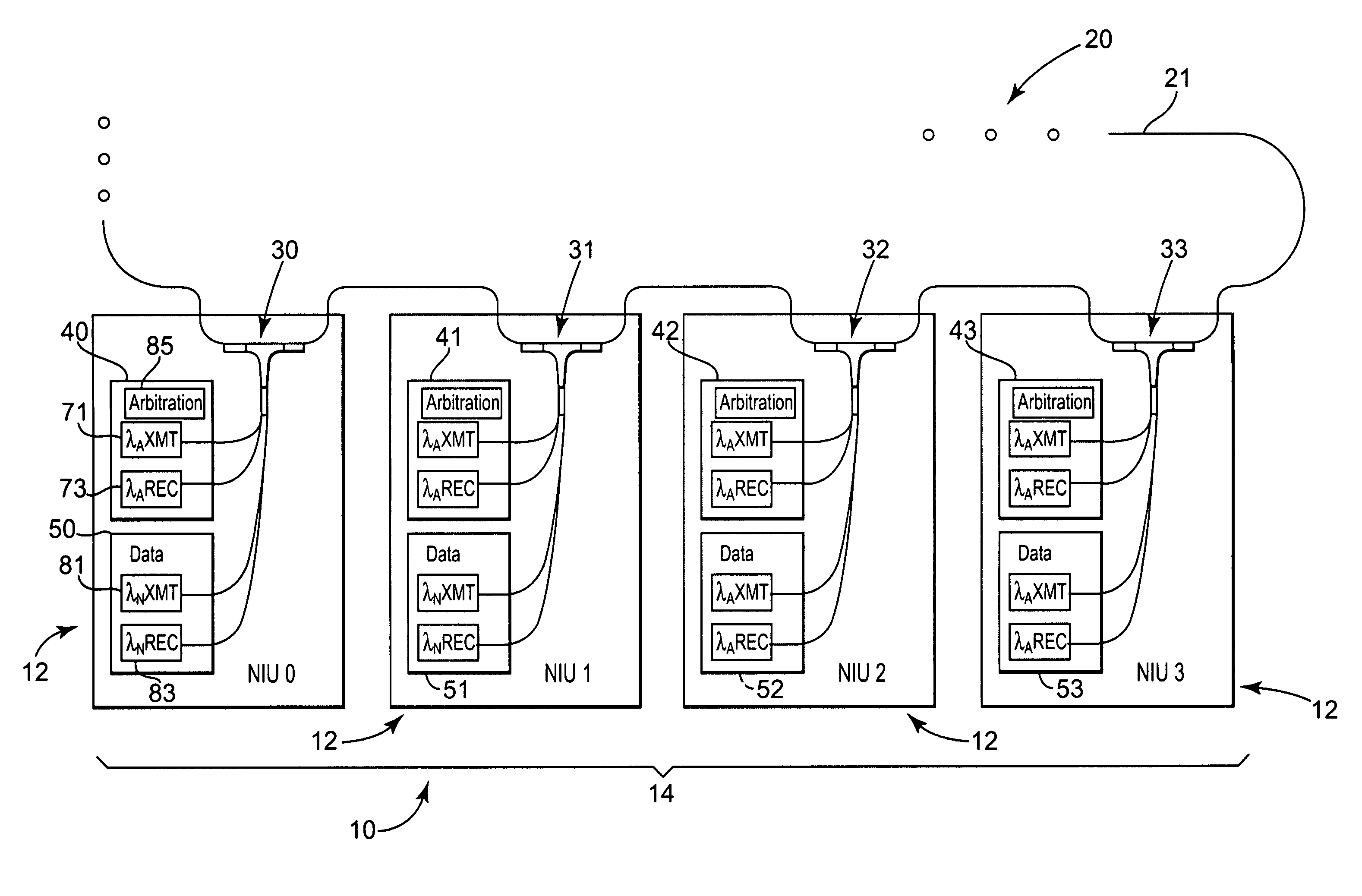Wavelength division multiplexed optical channel switching
a multi-channel optical channel and channel switching technology, applied in the field of communication systems and methods, can solve the problems of single point of failure of the optical network at the switch, lower reliability, and higher cost, and achieve the effects of reducing the weight, reducing the cost, and improving the reliability of the optical network
- Summary
- Abstract
- Description
- Claims
- Application Information
AI Technical Summary
Benefits of technology
Problems solved by technology
Method used
Image
Examples
Embodiment Construction
[0024]Generally, an optical communication system 10, according to the present invention, shall be described with reference to FIG. 1. One or more embodiments of the optical communication system and components thereof, along with methods associated with the operation of the optical communication system, shall further be described in more detail with reference to FIGS. 2-4.
[0025]Generally, and as further described herein, optical communication system 10 (e.g., a linear tapped bus) includes a plurality of nodes 14 (e.g., processor nodes) associated with corresponding network interface units (NIUs) 12 (e.g., NIUs connected via input / output to associated processor components). Although FIG. 1 shows network interface units NIU0 through NIU3, it will be readily apparent that any number of NIUs 12 may be used to interface any number of associated nodes 14 to optical backbone 20 of the optical communication system 10. Further, although a linear tapped bus configuration is shown, the present ...
PUM
 Login to View More
Login to View More Abstract
Description
Claims
Application Information
 Login to View More
Login to View More - R&D
- Intellectual Property
- Life Sciences
- Materials
- Tech Scout
- Unparalleled Data Quality
- Higher Quality Content
- 60% Fewer Hallucinations
Browse by: Latest US Patents, China's latest patents, Technical Efficacy Thesaurus, Application Domain, Technology Topic, Popular Technical Reports.
© 2025 PatSnap. All rights reserved.Legal|Privacy policy|Modern Slavery Act Transparency Statement|Sitemap|About US| Contact US: help@patsnap.com



